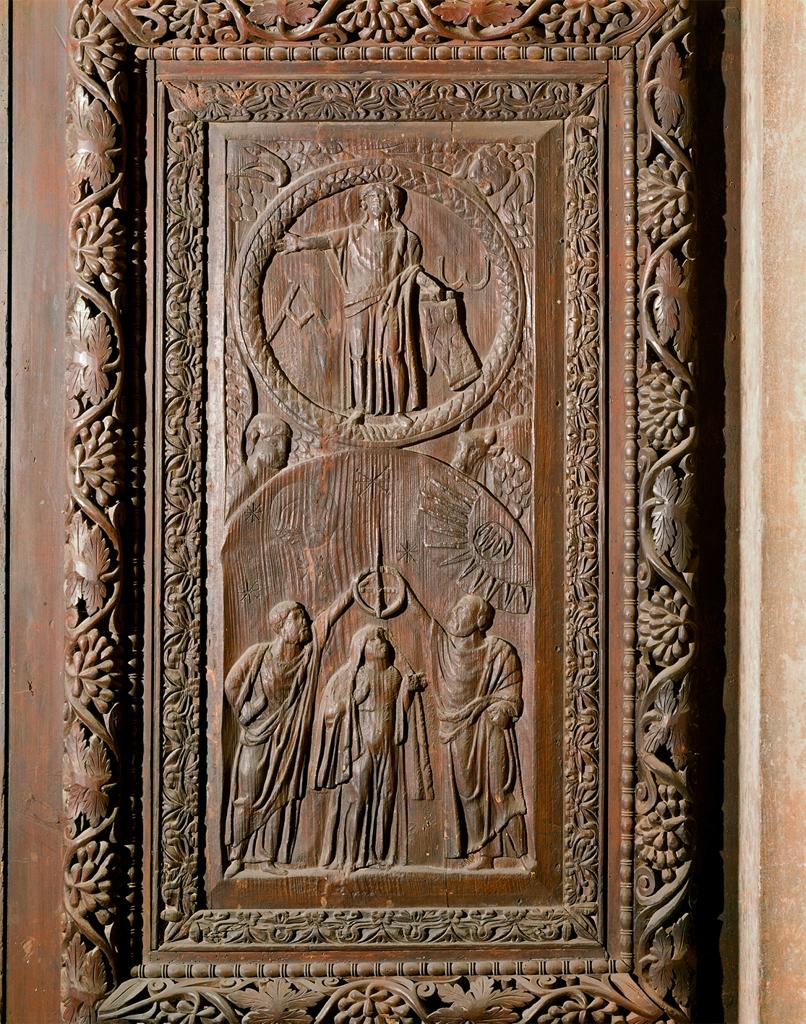Home » Digital Humanities » Using Digital Humanities to Interpret Early Christian Iconography on Doors of Santa Sabina
Using Digital Humanities to Interpret Early Christian Iconography on Doors of Santa Sabina
Posted by vrcvanderbilt on Wednesday, October 25, 2017 in Digital Humanities, HART, Lectures, News, Technology, VRC.
V anderbilt University recently hosted ReLACS (Regional Late Antiquity Consortium Southeast), an annual workshop on Late Antiquity. I attended a talk held in the Center for Digital Humanities, “Using Digital Humanities to Solve Early Christian Mysteries: A Re-Examination of the ‘Ascension’ Panel on the Doors of Santa Sabina, Rome.”
anderbilt University recently hosted ReLACS (Regional Late Antiquity Consortium Southeast), an annual workshop on Late Antiquity. I attended a talk held in the Center for Digital Humanities, “Using Digital Humanities to Solve Early Christian Mysteries: A Re-Examination of the ‘Ascension’ Panel on the Doors of Santa Sabina, Rome.”
Lee M. Jefferson, NEH Associate Professor of Religion at Centre College, discussed the initial stages of his research on a carved wooden relief panel on the doors of Santa Sabina. Jefferson focused primarily on his interpretation of the iconographic meaning of the object held by Peter and Paul in the lower half of the panel, as well as previous interpretations of the panel and possible analogs in other examples of Late Antique art.
Toward the end of his talk Jefferson shifted to a discussion of digital humanities: how he hoped to use it in his research at Santa Sabina, as well as a broader discussion of its utility in higher learning institutions. High quality images of the door panels are difficult to find in the public domain, so Jefferson plans to first create high resolution images of the “Ascension” panel. He then intends to use photogrammetry tools to closely examine the original workmanship of the panel, as well as subsequent damage and repairs. Jefferson hopes that this will provide insight into the type of object held by Peter and Paul in the panel.
Jefferson characterized himself as a relatively new convert to digital humanities. He discussed having recently begun to understand the opportunities afforded by digital humanities and its tools. He also touched on pedagogical reasons for embracing digital humanities: with universities and colleges increasingly focused on STEM disciplines, it’s important to find ways to attract those students to liberal arts and humanities courses. Using digital humanities tools in the classroom offers students an opportunity to expand their knowledge to include the humanities while teaching them skills broadly applicable to many fields. It also encourages students with technological and scientific backgrounds to take an interest in humanities scholarship and bring more skills to the discipline.
In our Visual Resources Center, as well as others worldwide, we spend a lot of time developing skills with digital humanities technologies so that we can present these technologies to scholars as useful tools for their research. It was interesting and valuable to hear the perspective of a scholar approaching digital humanities on their own terms, as opposed to librarians and visual resources curators making suggestions to them for potential uses.—Shelby Merritt, assistant curator of visual resources, Department of History of Art
*Wooden relief panel from the doors of Santa Sabina, Rome, ca. 432. Courtesy of ArtStor.

©2026 Vanderbilt University ·
Site Development: University Web Communications